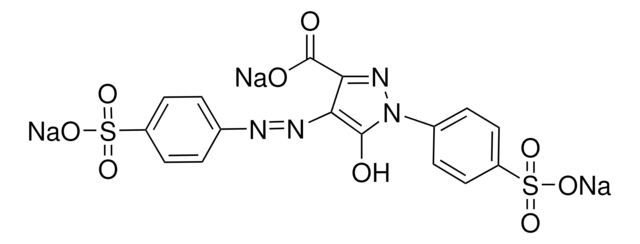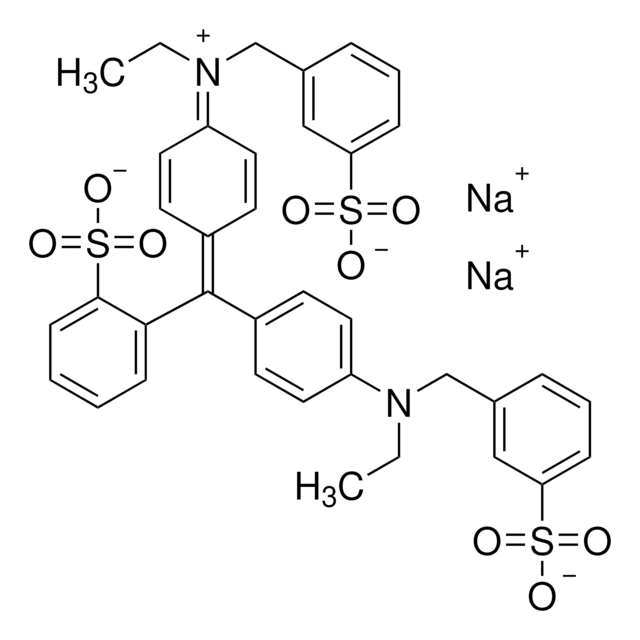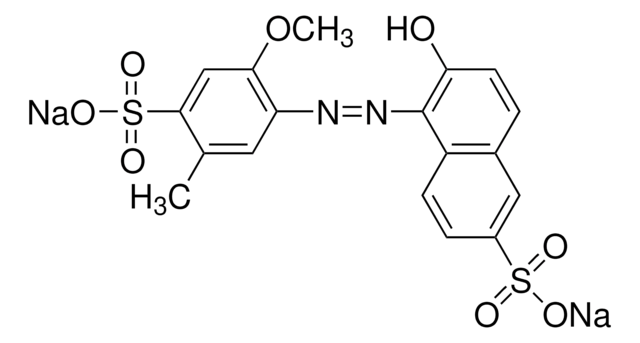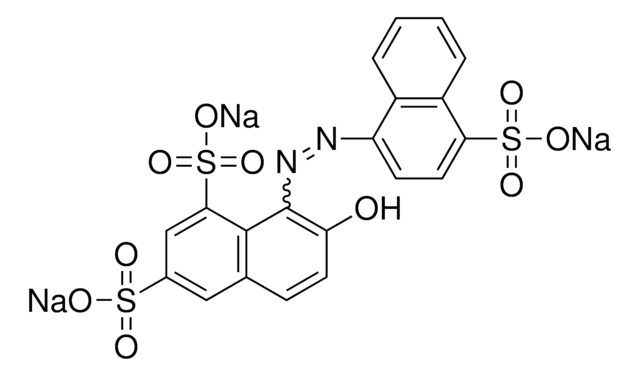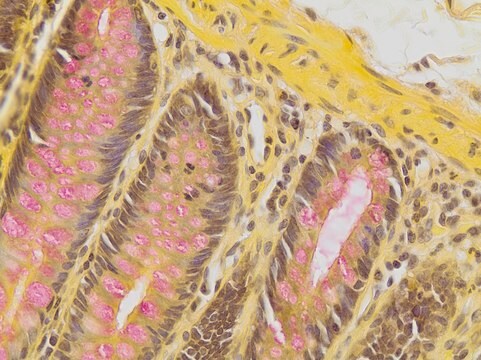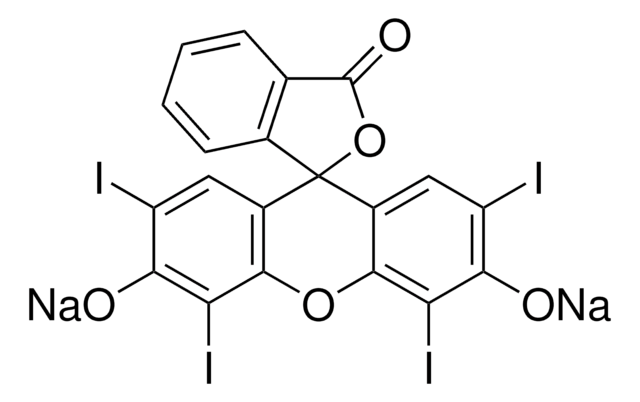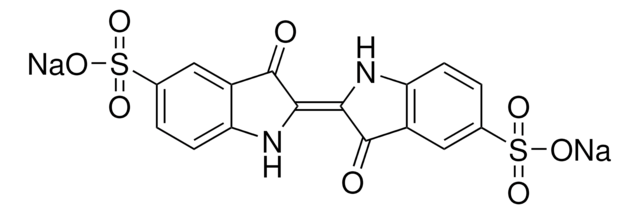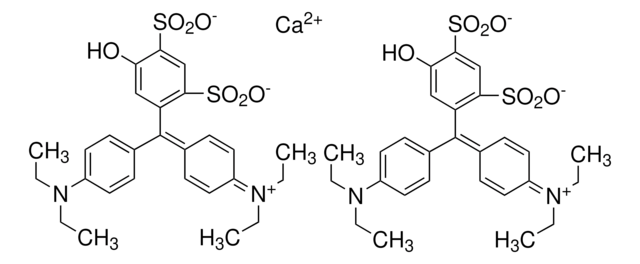03322
Tartrazine
analytical standard
Synonyme(s) :
Acid Yellow 23
About This Item
Produits recommandés
Qualité
analytical standard
Niveau de qualité
Pureté
≥97.0% (HPLC)
Durée de conservation
limited shelf life, expiry date on the label
Technique(s)
HPLC: suitable
gas chromatography (GC): suitable
Application(s)
cleaning products
cosmetics
food and beverages
personal care
Format
neat
Chaîne SMILES
[Na+].[Na+].[Na+].[O-]C(=O)C1=NN(c2ccc(cc2)S([O-])(=O)=O)C(=O)C1N=Nc3ccc(cc3)S([O-])(=O)=O
InChI
1S/C16H12N4O9S2.3Na/c21-15-13(18-17-9-1-5-11(6-2-9)30(24,25)26)14(16(22)23)19-20(15)10-3-7-12(8-4-10)31(27,28)29;;;/h1-8,13H,(H,22,23)(H,24,25,26)(H,27,28,29);;;/q;3*+1/p-3
Clé InChI
UJMBCXLDXJUMFB-UHFFFAOYSA-K
Vous recherchez des produits similaires ? Visite Guide de comparaison des produits
Description générale
Application
Conditionnement
Code de la classe de stockage
11 - Combustible Solids
Classe de danger pour l'eau (WGK)
WGK 1
Équipement de protection individuelle
dust mask type N95 (US), Eyeshields, Faceshields, Gloves
Faites votre choix parmi les versions les plus récentes :
Déjà en possession de ce produit ?
Retrouvez la documentation relative aux produits que vous avez récemment achetés dans la Bibliothèque de documents.
Les clients ont également consulté
Protocoles
Separation of Tartrazine; Amaranth; Indigo carmine; New Coccine; Sunset Yellow FCF; Allura Red AC; Fast Green FCF; Erioglaucine disodium salt; Erythrosin B sodium salt; Phloxine B; Rose bengal
Notre équipe de scientifiques dispose d'une expérience dans tous les secteurs de la recherche, notamment en sciences de la vie, science des matériaux, synthèse chimique, chromatographie, analyse et dans de nombreux autres domaines..
Contacter notre Service technique